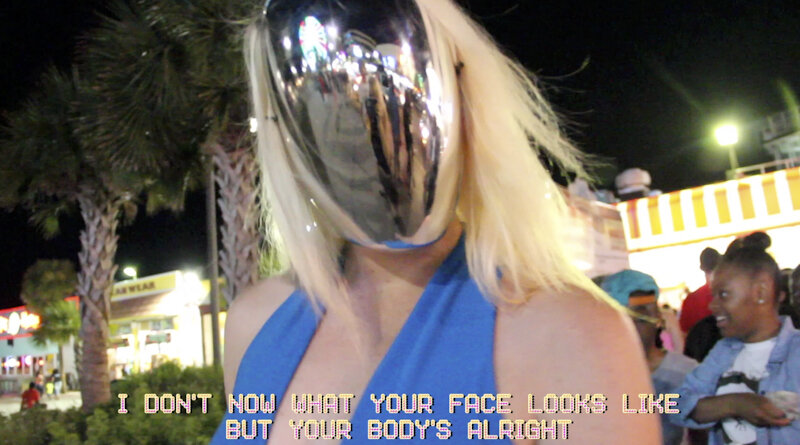Paddy Johnson has featured Signe Pierce in an article about how the artist-centric movement is having a watershed moment.
The Artist-Centric Movement has its Milestone Moment: SPRING/BREAK
By Paddy Johnson
Walking around SPRING/BREAK this Saturday seemed indicative of a watershed moment. The artist-centric movement we’ve been tracking for the last several years is finally gaining more visibility and commercial success and no where is that more evident than this fair.
Located on the administrative floors at Moynihan Station (above the main post office), over 100 curated projects took over once occupied office space. These rooms were painted, wallpapered and filled with weird, temporary installations of fake apartments, medical institutions and cut out gardens. They also included paintings, collages and any other medium you can think of. Meanwhile, lines of fair goers wrapped around the building waiting to get in—even from the outside the excitement was palpable.
And that’s not surprising. For those of us who have been complaining about art fairs for years, SPRING/BREAK felt like a much needed antidote. As I said over Twitter, artists need rooms and buildings they can fully transform, not just cubes.
Artist-run projects and whole-cloth transformations of buildings don’t typically happen at the more conventional fairs, in large part due to the sky-high barrier to entry. Artists can’t afford to participate on their own and booth rental is so expensive that dealers must package art neatly for collectors so they can make their costs back. Usually means showcasing an array of art that will hang neatly over a couch.
There’s nothing wrong with this model, but it shouldn’t be the only one; no one needs the monotony art fair season has come to represent for many of us.
Thankfully, SPRING/BREAK breaks with that structure by offering rooms that can be fully altered at no cost—only a deposit is required—and taking a percentage of the sales. That lowers the barrier to entry significantly enough that artists and independent curators can afford to participate. That’s good news for everyone. It’s less of the same for art lovers and should be a relief to collectors who are purchasing less because they have an empty space on the wall than because the creative act inspires them.
And from what we’ve been told, collectors have been coming through the space and buying plenty. That’s essential, because it creates more revenue options for the artistic-centric movement, and they need them! The art world desperately needs the life and creative energy this movement brings, so I couldn’t be more happy to see the momentum build.
What is it about a woman in a mask that American’s find so threatening? This is not a video to viewed casually at work. It’s truly shocking. Signe Pierce might be the bravest performance artist we’ve ever encountered. Every time we walked by the room, a crowd of people were standing around the TV watching this short piece. AmericanReflexxx by Signe Pierce and Alli Coats at Myla Dalbesio.
A group of artists have been institutionalized for a viral contaminate called lethargical-something something. (I didn’t catch the full name.) They’ve been given medication called El Dopa to treat the condition, but it has certain side effects—namely making you crazy. An incredible piece mostly because the improvisational acting was so great. It really seemed like these people were fucked.
Galleries weren’t allowed to participate, so when dealers sometimes presented their own curatorial projects. I heard some concerns that this could be an issue in the future, but for now, I like having their perspective included as well—particularly because it’s only been the cool dealers that have done so. This wall of collages by Scott Zieher, of Zieher Smith & Horton provides a good example. Dimin, a partner at Denny Gallery put the show together, knowing that Zieher has this under-known practice.
The press release describes these works as deeply informed by DADAist collage—they don’t have any fixed meaning—but they are also clearly built through an interest in line, form and often the body.
This piece by Scott Zieher works because of the reversal of depth created by the collage insert — the open mouth is a hole, but also reads as a solid line in a petal. The rose itself begins to look like a costume for the figure. So good.
A creepy installation by fair organizers Ambre Kelly and Andrew Gori that includes dot matrix printers printing out a message I couldn’t decipher paired with movie footage of a military control room and a narrator telling audiences ominously that he understands death.
This show reflected a fairly traditional install and gets points from us for having included artists we weren’t previously familiar with such as Jessica Langley and Paul Gagner. Nicholas Cueva, an AFC IMG MGMT artist was also included! Above is the work of Jessica Langley, which is made by taking screen captures of the screen saver gradient then printing and mounting them on shaped panels. Those circles that look like nipples are actually images of the American West taken by satellites. But I like them because they look like boobs.


